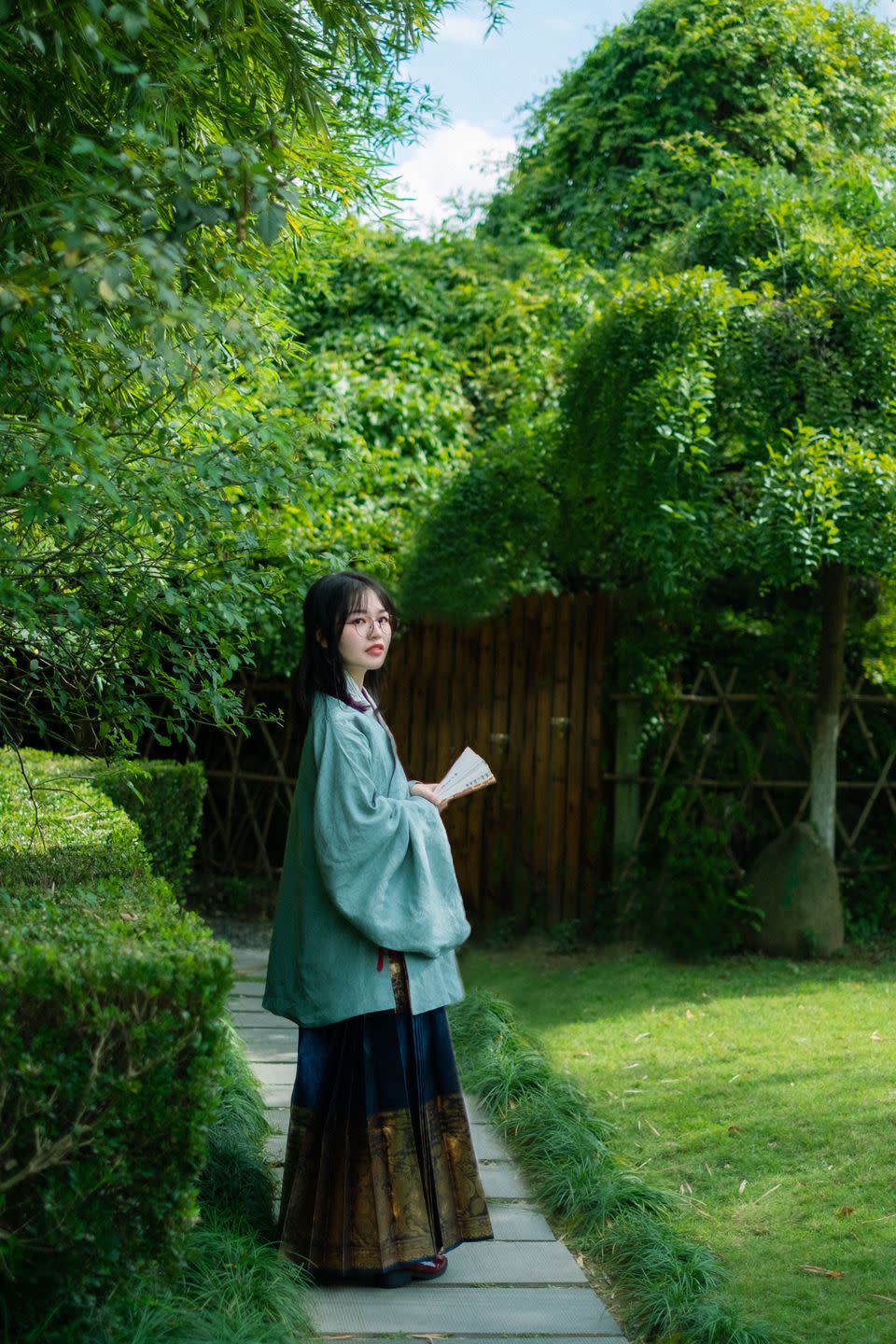A return to tradition: how Hanfu returned as a modern style statement

To say Hanfu is not new is an understatement. This traditional style of clothing – a robe or jacket paired with a skirt worn by the Han people of China - is 3,000 years old, but a new wave of young Chinese devotees have brought it back to the forefront.
Hanfu, translating as Han Chinese costume, is the cultural dress of the largest ethnic group in China: Han. With the help of social media, a Hanfu revival movement has emerged out of a desire to express national identity and the growing confidence of self-expression by Chinese youths – a catalyst that has driven a market of two million consumers. Shanghai-based content creator Shiyin is leading the way, regularly sharing Instagram posts of her in flowing robes adorned with ornate embroidery, while microblogging platform Weibo reports that #Hanfu has had over 4.89 billion views to date.
This type of dress first arrived under Manchu rule during the Qing dynasty 3,000 years ago, but it’s only now that it’s being reclaimed by Gen Y and Gen Z women. “It's gradually moving from a subculture aspect towards popular culture,” says Hanfu make-up artist and stylist, Lin He Huang.

Evolving throughout several dynasties in history, there are different variations exist of the Hanfu, which conveniently offers more choice for modern adoptees. Popular styles include the Tang, Song and Ming dynasty. Hanfu enthusiast Bo Yu Li’s choice is Ming dynasty style “because it’s flamboyant and elegant”. Ming dynasty is known for luxurious materials including satin and silk that often use gold leaf to enhance its richness. The layered silhouette is also accompanied by detailed embroidery that requires a high level of craftsmanship. Contrastingly, Kuby Ku, another Hanfu fan, prefers the Tang. “It feels lively and fresh with a sense of cuteness. I like its youthfulness.” The Tang, meanwhile, has become popular for its vibrancy - a style that often utilises bright colour.
Hanfu traditionally has been worn for special occasions, but the new revival sees it worn simply as part of everyday fashion. The global Chinese diaspora also means the opportunities to see Hanfu outside of China have increased significantly over the last decade. Although wearing Hanfu can be a complicated process (there are seven steps to putting one on properly), modern enthusiasts have found a way of simplifying the process by styling it with contemporary pieces. “I’ve tried styling a ma mian qun with a T-shirt or a blouse, because Hanfu is sometimes a bit over the top for everyday life,” says Ku. Li agrees, “I [style it with contemporary clothes] sometimes because I would like to see Hanfu worn on a daily basis rather than just a formal dress for events. It’s normal for the Japanese to wear kimonos on the streets. I hope our society’s acceptance towards Hanfu will develop in that direction.”
Despite often involving embroidery, the production of Hanfu is not something of the past. It can be mass-produced with contemporary techniques and at different price points from £11 to £1,100 depending on the material. If a client prefers to experience the original hand-made artisanship, they can visit Ming Hua Tang, an online store established in 2007 specialising in Ming dynasty Hanfu. Similar to the western haute couture process, Ming Hua Tang takes around a year to create a ma mian qun, a skirt worn during the Ming Dynasty for riding, and a jiaoling robe, a top with a round collar. “I like Ming Hua Tang because they have the best craftsmanship, woven fabrics, restored patterns and colour schemes,” says Li. “There are never problems with fit.”

Unsurprisingly for a country that has paved the way for e-commerce, Hanfu is sold primarily online. Alibaba’s online platform, Taobao, has been the main port of export since the start of Hanfu’s revival, making it reachable for customers around the world. However, in the eyes of Hanfu fans like Ku, “physical stores are a good way forward.” In a busy e-commerce market, it’s difficult to distinguish Hanfu brands from each other, and the opening of physical stores is thought to bring this way of dressing a step further towards popular culture.

The Hanfu resurgence has become an opportunity to embrace Chinese culture and a sense of national and personal individuality. “I started wearing Hanfu because it was beautiful, but also because it encouraged me to appreciate my own culture,” says Ku. Her story is one echoes by many modern devotees. Hanfu goes back to the roots of Chinese dress – it expresses a sense of cultural identity that once lacked in China due to restrictions on self-expression imposed by the Cultural Revolution. Liberating themselves from past constraints, women have grasped a decision-making power to wear what pleases them.
The growing success of the Hanfu industry illustrates the potential of traditional dress. A heritage-based movement boosted by the internet, Hanfu’s influence is finally reaching the international stage.
You Might Also Like


